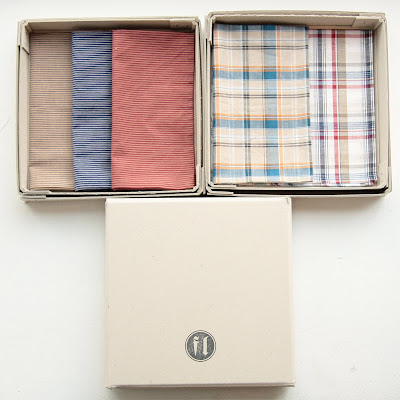A Brief History
Historically, white handkerchiefs have been used in place of a white flag to indicate surrender or a flag of truce; in addition to waving away sailors from port. King Richard II of England, who reigned from 1377 to 1399, is widely believed to have invented the cloth handkerchief, as surviving documents written by his courtiers describe his use of square pieces of cloth to wipe his nose.
During Victorian times "hankies" were used by ladies as a means of flirtation. Often a woman would intentionally drop her hankie giving a gentlemen an excuse to speak with her under the guise of simply returning it. Women's hankies during this time were delicate, made with silks, lace and sometimes fine linens.
At one time the material of a handkerchief was symbolic of the social-economic class of the user. This was not just determined by the cost of the fabric used to make the handkerchief, but often because some materials are more absorbent and practical for those who might make use of one rather then simply wear one for aesthetic purposes. That's right, they are useful. When it's hot you can wipe the sweat from your brow, or your hands. Should your eyes well up with tears you can wipe them dry, or offer your handkerchief to someone who is reduced to tears in your presence.
Above: September 1953, football coach, Jack Freeman, holding ball under arm and drying eyes with handkerchief as he weeps with joy after his team, William & Mary, tied navy.
(Photo by Hank Walker)
Watch Jean-Luc Godard make great use of a handkerchief in this short film by Agnes Varda starring
Anna Karina.
It is a film within the film Cléo de 5 à 7(1962) directed by Agnes Varda.
(taken from Lark About)
********
Anna Karina.
It is a film within the film Cléo de 5 à 7(1962) directed by Agnes Varda.
(taken from Lark About)
********
Miss Manners has this to say with regards to the handkerchief:
Dear Miss Manners:
What do you do with tissues, after you have blown your nose in them, when you are out in public or at a friend's house?
Gentle Reader:
For such occasions, you employ a cloth tissue, a clever little invention which is a square of cotton or linen that may be conveniently carried in the pocket and reused throughout the day. One should never begin the day without a fresh one of these concealed about ones person. Consider, for example, the difference this would make if you should have occasion to weep in front of others. Weeping into paper is disgusting; weeping into fine linen is romantic drama.
With all of these inspirations in mind we have these amazing handkerchiefs available from Frank Leder.
They come in a great Eastern Block style gift box.
Available Online: Check Handkerchiefs and Stripe Handkerchiefs













No comments:
Post a Comment